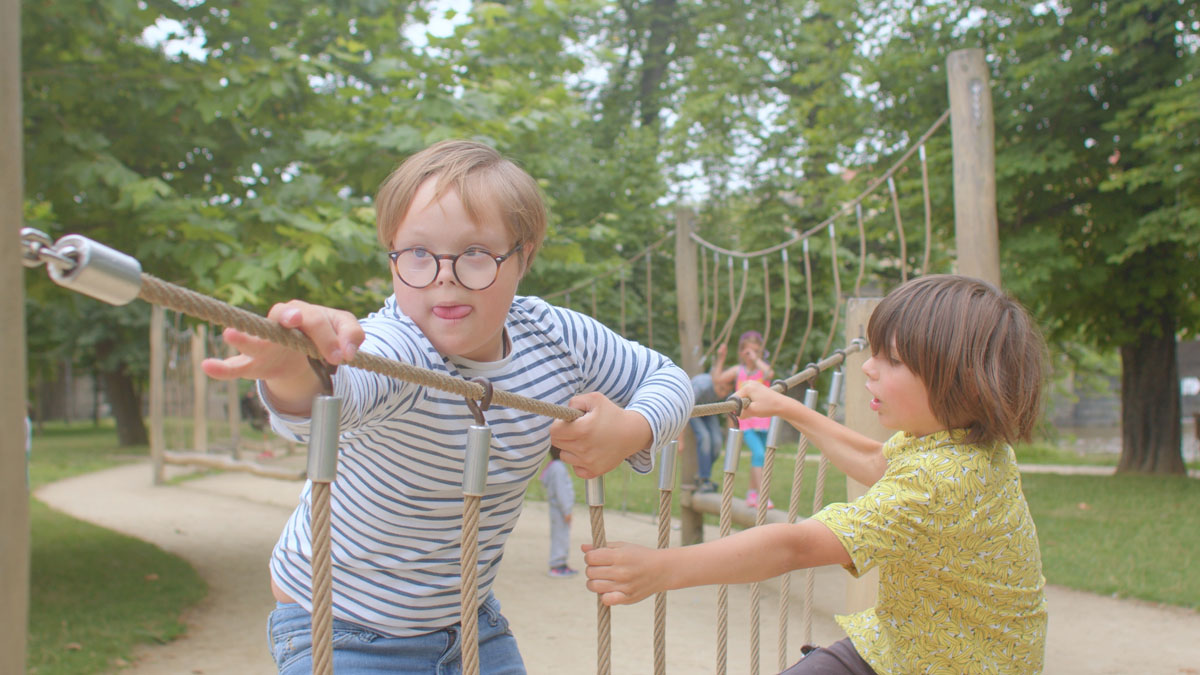The active service model (sometimes referred to as active support) is about encouraging independence.
We know that if a person no longer performs a task for themselves, they will eventually lose the ability to do that task. People can lose the opportunity to use their muscles and brains if we take over things they can do for themselves, even if we have the best of intentions.

Image by Ingo Bartussek, Shutterstock, Shutterstock licence
There are three main ways to follow the active service model:
- Encourage the person to do as much of a task for themselves as they can, even if it takes longer for them to do it.
- Teach the person new skills and support them to practise these skills until they can do them independently.
- Help the person to maintain their skills for as long as possible by continuing to let them practise these skills. This is called skill maintenance.
 Case study
Case study
This case study is about a support worker doing tasks for a client, instead of allowing them to do it themself.
Sonja is a support worker. Today she is running late because her car would not start. She begins her day’s work 45
minutes behind schedule.
Sonja goes to assist Mr Finch to get ready for the day. Mr Finch can walk slowly on a walking frame, but Sonja is in a hurry, so she sits Mr Finch in a wheelchair and pushes him down the hallway for his shower. When he is washed, she dries him with the towel and says it will be quicker if she dries his back and legs rather than having him do it. Sonja wheels Mr Finch back to his room, pulls some clothes out of the cupboard and quickly dresses him, even assisting him with his shirt and buttons, which Sonja knows he can do himself.
 Reflect
Reflect
Should Sonja rush through supporting Mr Finch so she is not late for her next clients? Why or why
not?
How would you feel if you were Mr Finch in this situation?
Add your responses to your digital device.
Strengths-based practice
Strengths-based practice draws on the person’s own existing strengths rather than providing support that addresses only their weaknesses.
 Select to learn more
Select to learn more
Select the items on the image to reveal more information about how you can provide support using a strengths-based approach.
Image
by freepik, freepik
licence
Skill development and maintenance
There are many ways to help the person learn new skills and/or keep the skills they already have.
 Select to learn more
Select to learn more
Select each bar to expand and reveal some examples of skill development.
 Read to learn more
Read to learn more
The Intellectual disability: promoting daily living skills in adults factsheet contains key information on how you can support a person with an intellectual disability in developing daily life skills.
 Case study
Case study
This case study is about modifying a personal support plan to include tasks they can now do independently.
Cole is a support worker at a special development school, where Abdul is a student. Abdul is eight years old and has Down syndrome. He is unable to perform most of his own personal care tasks. Abdul loves having his shoes and socks off and has always needed someone to put them back on for him when he goes outside or is ready to go home.
Abdul’s individualised plan states that staff should provide full assistance to Abdul when he needs to put on his socks and shoes.
Today, when Cole is getting Abdul ready to go outside and play, he notices that Abdul has found his shoes and socks
by himself and has started to pull his socks on. He cannot pull them up properly, but he has at least got them part
of the way on. Cole praises Abdul and suggests that if Abdul can do this again tomorrow, he will ask Abdul’s mother
to buy him a pair of Superman socks. He talks to his supervisor about changing Abdul’s personal support plan to
instruct workers to encourage Abdul to put his own socks on and assist only when he has done as much as he can. They
build small rewards and praise into the plan to encourage him, which can be slowly faded out.

 Record your thoughts
Record your thoughts
Document your thoughts to each of the questions below about the case study. When you have finished, select Create Document to export your content and keep for later.
Background Colour
Font Face
Font Kerning
Font Size
Image Visibility
Letter Spacing
Line Height
Link Highlight
Text Colour